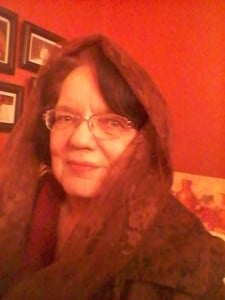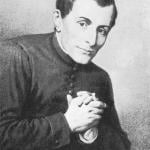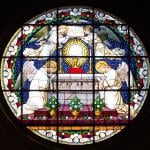 September 8 is the Feast of the Nativity of the Virgin Mary– and I’ve got a question for you: WHY are there two babies in this picture?
September 8 is the Feast of the Nativity of the Virgin Mary– and I’ve got a question for you: WHY are there two babies in this picture?
This painting, titled “Birth of the Virgin,” is by the Renaissance artist Giotto di Bondone (better known simply as “Giotto.”) It’s one of a fresco cycle on the life of the Blessed Virgin Mary.
Giotto’s work can be seen in the basilica at Assisi and in the campanile (bell tower) of the Basilica di Santa Maria del Fiore (Basilica of St. Mary of the Flower) in Florence, Italy. It’s in Padua, though, where Giotti’s masterwork, the frescoes depicting the life of the Virgin and the life of Christ, can be seen. They’re in the Scrovegni Chapel (also called the Arena Chapel), which is built on a site where—for more than a generation—medieval Christians had held an annual open-air procession and reenactment of the Annunciation to the Virgin.
 The Scrovegni Chapel was commissioned by a wealthy landowner, Enrico Scrovegni. Historians believe that Scrovegni, like his father before him, had once earned his living by usury (charging interest on loans), a sin so grave that the penalty for usury was excommunication, but that he had repented of his sin. Enrico’s father, Reginaldo degli Scrovegni, is the usurer encountered by Dante in the Seventh Circle of Hell. Enrico is believed to have built the chapel in penitence for the sins of his father and as restitution for his own sins. He is buried in the chapel’s apse, and is portrayed in his fresco of the Last Judgment—where he is presenting a model of the chapel to Mary.
The Scrovegni Chapel was commissioned by a wealthy landowner, Enrico Scrovegni. Historians believe that Scrovegni, like his father before him, had once earned his living by usury (charging interest on loans), a sin so grave that the penalty for usury was excommunication, but that he had repented of his sin. Enrico’s father, Reginaldo degli Scrovegni, is the usurer encountered by Dante in the Seventh Circle of Hell. Enrico is believed to have built the chapel in penitence for the sins of his father and as restitution for his own sins. He is buried in the chapel’s apse, and is portrayed in his fresco of the Last Judgment—where he is presenting a model of the chapel to Mary.
But back to my question: Why TWO babies in swaddling clothes?
No, Mary was not a twin! Actually, both babies are depictions of Mary. It was unusual for Giotto to use this technique of painting the same person twice in a single painting; but it was not an unusual technique among artists of that era.
The first baby is Mary, wrapped in swaddling clothes, after having been bathed by attendants on the floor.
Then, after she has been washed, she—the second baby in the picture—is presented to her mother Ann who is lying in the bed.
On September 8—exactly nine months after the Feast of the Immaculate Conception—the Catholic Church celebrates the Feast of the Birth of the Virgin Mary. If you’re wondering about Catholics’ understanding of the Immaculate Conception, check out that story here.










